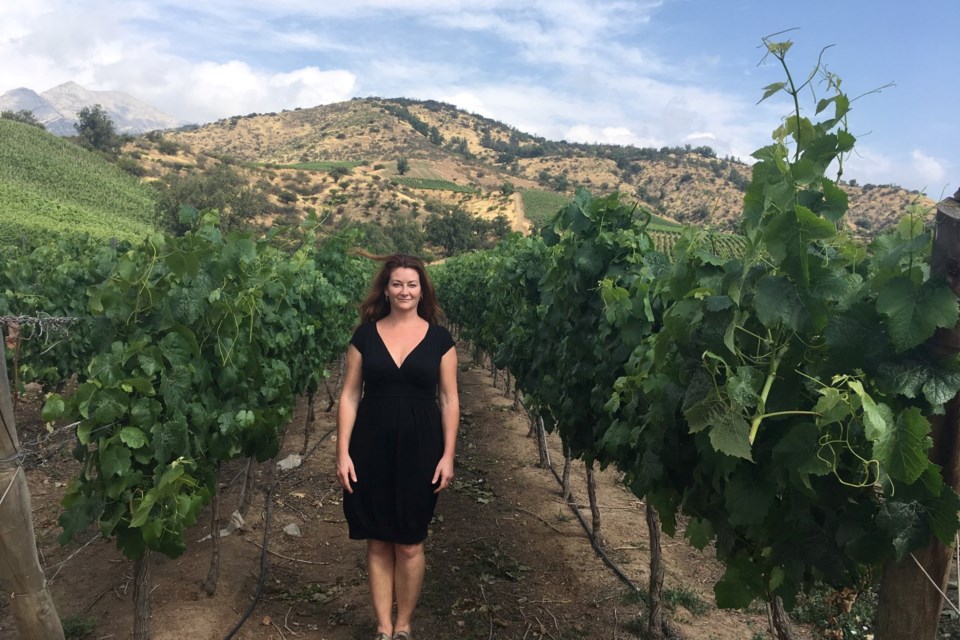As we turn the page on summer this week, it’s hard not to reminisce.
It was the hottest summer ever recorded on planet Earth and those spicy temperatures have wreaked havoc on many industries, including farming and wineries.
“It’s really doing damage to vineyards in certain places all over the globe to the point where some owners (like in Australia) are having to pick up and move out of places ravaged by fire and drought,” Heather Downey said.
Downey is a certified sommelier (a professional wine steward specializing in wine service, from tasting to food pairing) from Sudbury who has visited and taste-tested at vineyards worldwide. Here in Sudbury, she also is the owner of Terroir Tastings, a wine-tasting business that also distributes domestic wines and those from abroad.
Drought, smoke and rising temperatures are creating upheaval with different wine types that require specific grape varieties.
After hundreds of years, many regions with strict guidelines on wine chemistry are changing the laws when it comes to grapes due to the limitations of climate change.
“Governing bodies have had to pivot and change the picking times for the grapes needed in Champagne because they are ripe in August instead of October,” Downey said.
“There are six specific grapes needed to make a Bordeaux blend. That has changed to add Touriga Nacional, a Portuguese and Spanish grape, along with other varieties due to changing weather patterns,” she added.
Regions like Burgundy, in central France, need a cooler climate to make higher acidic grapes like Pinot Noir. That’s also becoming more difficult with warmer temperatures.
And if that is not enough, monsoons and hail storms have devastated many crops worldwide. In 2017, the Burgundy region was the casualty.
While the sanctity of some blends is being tweaked, it’s not all doom and gloom.
Thanks to a cooler climate in Canada, vineyards are thriving and even multiplying by being further from the Equator.
“It used to be hard to get great reds in the Niagara region as grapes were not ripening as well,” Downey said. “Now, there is an amazing selection of Cabernets and Gamays that are light bodied, and of course Pinot Noir.”
Pelee Island, Muskoka, Manitoulin Island and Barrie have ramped up wine production in recent years.
Downey said she is in good shape with the changes.
“I like dry wines from places like Northern Italy (which have been) less impacted by climate change,” she said.
Brunello red wines from the Tuscany region of Italy have also had a few amazing years of sheer ripening perfection, Downey said.
As we head into the weekend of Thanksgiving, Downey urges wine enthusiasts to experiment.
“It’s a misnomer that you need white wine for certain meals and red for others,” she said.
“Heartier foods like heavier wines that are rich, bold and heavy.”
She recommends a heavy Cabernet, Schiraz or Amarone from the Northern region of Italy.
Downey says it is important to think about sauces in your meal, too. Olive oil or butter need a good acidic wine to cut the fat.
She recommends an oaky Chardonnay as well as an aged, austere and dry Riesling or Pinot Noir for turkey, gravy and stuffing meals.
“Never overlook the rose and sparkling wines,” she added.
Those interested in tasting opportunities or about becoming a wine connoisseur can visit
Heather’s Facebook page Terroir Tastings. There you can also learn about a Wine and Spirit Education Trust course she is offering at Collège Boréal this fall in the wine lab.
Anastasia Rioux is a writer in Greater Sudbury. Let’s Eat! is made possible by our Community Leaders Program.
